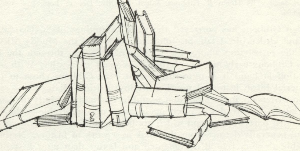Articles/Essays – Volume 01, No. 3
Short Notices
The Everlasting Spires: A Story of the Salt Lake Temple . By Wallace Alan Raynor. Salt Lake City: Deseret Book Co., 1965. 203 pp. $3.25.
With the exception of a different title and the addition of one paragraph in Chapter VIII, The Everlasting Spires is a reprinting of Wallace Alan Raynor’s Master’s thesis at the Brigham Young University, completed in August, 1961. The thesis title, “History of the Construction of the Salt Lake Temple,” more accurately describes the book’s content than the present title does.
Raynor’s work covers in minute detail the construction of the temple from July 28, 1847, when President Brigham Young proposed a forty-acre plot of ground for the temple block in Salt Lake City, to the last dedicatory session on April 24, 1893, after eighty-two thousand saints had participated in presenting their new temple to God. Raynor skillfully presents well-documented particulars about the excavation, the architectural and building plans, the stone quarry and stone work, the problems relating to the transportation of the stone (oxen, broken wagons, canals, and railroad spurs, etc.) , the political and financial difficulties causing years of setbacks, the architectural design of the exterior and interior, the symbolic exterior stones (earth, moon, sun, cloud, stars, Saturn, big dipper, all-seeing eye, handclasp, and the Alpha and Omega stones) , the ingenious suspension systems for the finials, the Angel Moroni statue, and the final dedicatory services.
With its numerous valuable photographs, maps, and diagrams (many never published before) , and the biographies of all the key temple builders, as well as the bibliography and index, Raynor’s work of over 200 pages will become an interesting and valuable source for all conscientious students in L.D.S. Church history.
Reed C. Durham, Jr.
L.D.S. Institute
University of Utah
***
Saint and Savage. By Helen B. Gibbons. Salt Lake City: Deseret Book Co., 1965. xii + 249 pp. $3.95.
Helen Gibbons has portrayed the early beginnings of St. George, Santa Clara, and Orderville, Utah, St. Johns, Arizona, and the Muddy Mission, as well as the proselyting among the Indians of the area, through the eyes of Andrew Gibbons, early Mormon Indian missionary and settler. With so much information at hand it is unfortunate that Mrs. Gibbons chose to turn to her material in an historical novel, injecting fictitious dialogue, as so many Mormon writers do, into a story that would be fascinating if only the bare facts were related. The reader is often made quite uncomfortable as he tries to decide which parts are fact and which are fiction, and of course the imaginary additions generally detract from the book as a work of history. Nevertheless Mrs. Gibbon’s story is well documented and better than most in telling the story of devotion to a cause.
There are a few errors of fact and interpretation: the Nauvoo Temple was dedicated in parts at least four times, not just twice; and the Mississippi River was not frozen over on February 4, 1846 (p. 25) when the first Mormons left Nauvoo on their trek west. The book perhaps overemphasizes the Mormon side of the Utah War (p. 53). If Mrs. Gibbons had read the sermons of the times she would realize that there was some basis for government concern regarding Mormon loyalties. Probably Norman Furniss’s The Mormon Conflict should have been read before writing this part of the book. The treatment of the Mountain Meadows Massacre avoids the pitfalls of many Mormon historians in this area, but the bibliography does not list Juanita Brooks’s The Mountain Meadows Massacre, the best work on this subject.
Kenneth W. Godfrey
College of Religious Instruction
Brigham Young University


 Back to full Issue
Back to full Issue

